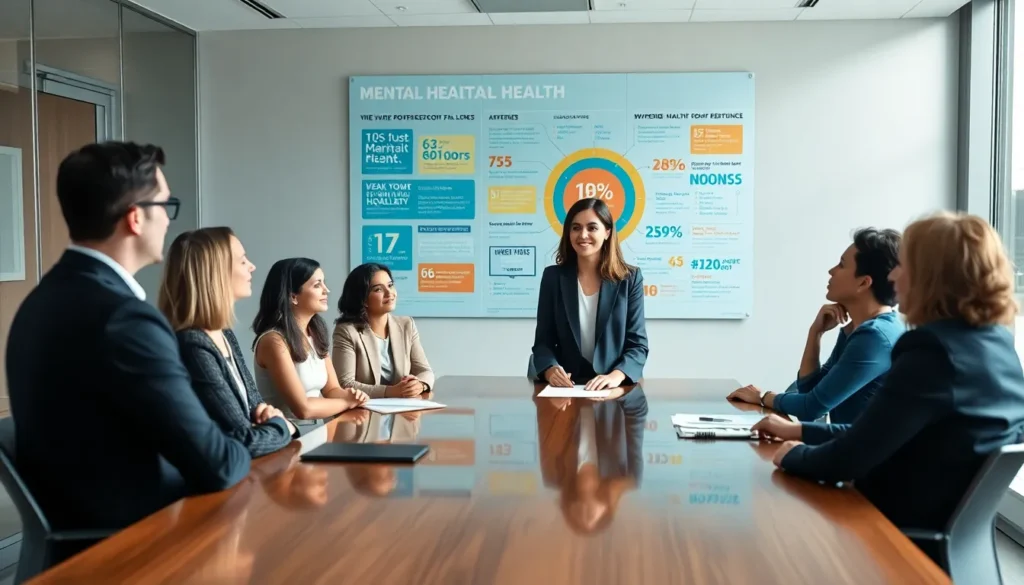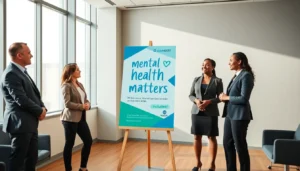In a world where memes can make you laugh and cat videos can soothe your soul, isn’t it funny that mental health often gets brushed aside? But here’s the reality: mental health matters, and the visuals surrounding it can make all the difference. Whether it’s a powerful photograph, an inspiring infographic, or a relatable cartoon, these images speak volumes in ways words sometimes cannot. So, why should we care about mental health matters images? Buckle up, because we are about to uncover their significance, types, and how they contribute to societal understanding, without losing our sanity along the way.
Table of Contents
ToggleThe Importance of Mental Health Awareness

Awareness around mental health has skyrocketed in recent years, and for good reason. With increasing conversations about anxiety, depression, and the pressures of everyday life, it’s become vital for society to understand that mental health is just as important as physical health. The images that represent this awareness play a crucial role. They help in breaking the stigma surrounding mental health issues, encouraging individuals to seek help. They also foster a sense of community for those who are struggling. Essentially, mental health matters images have the power to convey messages of support, understanding, and compassion.
Research indicates that visuals can significantly heighten awareness and empathy towards mental health challenges. When someone sees an image, it’s often more impactful than reading a statistic or hearing a story. This emotional response is essential in reducing stigma and inviting open discussions. Eventually, these images empower people to acknowledge and address their mental health concerns.
Types of Mental Health Matters Images
When discussing mental health matters images, one should consider the various forms they can take:
Photographs
Genuine photos can capture raw emotions. They often portray real people in real struggles or moments of joy. A candid photo of someone meditating, smiling, or receiving support can evoke feelings of connection and understanding.
Infographics
These visual representations of data can break down complex information into digestible formats. Infographics may showcase statistics on mental health issues, illustrate coping mechanisms, or present resources available for support. They make learning about mental health engaging and easier to understand.
Illustrations and Cartoons
Often light-hearted yet relatable, illustrations can tackle heavy subjects without being overwhelming. They engage viewers by mixing humor with profound messages, creating a unique way to resonate with various audiences.
Quotes
Images featuring inspirational quotes can provide motivation and solace. Simple yet powerful quotations can become daily reminders that resonate with someone struggling or seeking encouragement.
Each of these types offers a different avenue for communication and understanding, catering to diverse audiences and their mental health journeys.
How Visuals Impact Mental Health Perception
Visual content holds enormous power in shaping perceptions about mental health. Studies show that people are more likely to remember visual messages rather than just text. This means that an eye-catching image can linger in someone’s mind much longer than an article or post.
Also, images can frame narratives. For instance, an image depicting therapy sessions can normalize seeking help, while a photograph showing someone laughing can remind viewers that joy exists even during tough times. The right visuals can turn feelings of isolation into feelings of connection.
Also, mental health matters images can evoke empathy and understanding. When individuals see someone else’s struggles represented visually, it fosters a sense of community. They realize they are not alone, and this understanding can be liberating. It’s amazing how a simple image can change the narrative about mental health from one of stigma to one of support.
Creating Effective Mental Health Matters Images
Crafting effective mental health matters images requires thoughtfulness and skill. Here’s how creators can ensure their images resonate:
Authenticity
Authentic representations are key to connecting with audiences. Photos and illustrations should depict real emotions, making the experience relatable.
Inclusivity
Diverse representations are crucial. Mental health affects people of all backgrounds, and visuals should reflect this diversity to create an inclusive environment.
Clarity
The message should be clear. Whether it’s an infographic or a quote, the viewer should immediately grasp the intended meaning without ambiguity.
Balance
While it’s essential to represent struggles accurately, there should also be an emphasis on hope and healing. This balance can inspire viewers to seek help rather than feel overwhelmed by despair.
Quality
High-quality images are essential for impact. Blurry or poorly composed visuals can diminish the seriousness of the message. Creators should invest in quality to ensure their work does justice to the cause.
Using Mental Health Images Across Platforms
Once effective mental health matters images are created, it’s vital to use them strategically across various platforms:
Social Media
Platforms like Instagram and Twitter are prime locations for sharing mental health images. Consider using hashtags for greater visibility and engagement. Sharing stories alongside visuals can create a more profound impact and resonate with followers.
Websites and Blogs
Incorporating images within articles can enhance readability and retention. Infographics, particularly, can break up text-heavy sections, making information easier to digest.
Workshops and Events
Images used in informational sessions or support group meetings can create welcoming atmospheres. Visual aids can help set the tone and encourage participation.
Print Materials
Brochures and posters are still effective tools for spreading awareness. Quality images can attract attention and convey crucial information about mental health resources.
Each platform offers unique opportunities for communicating the importance of mental health, and visuals play a critical role in reaching a wider audience.





